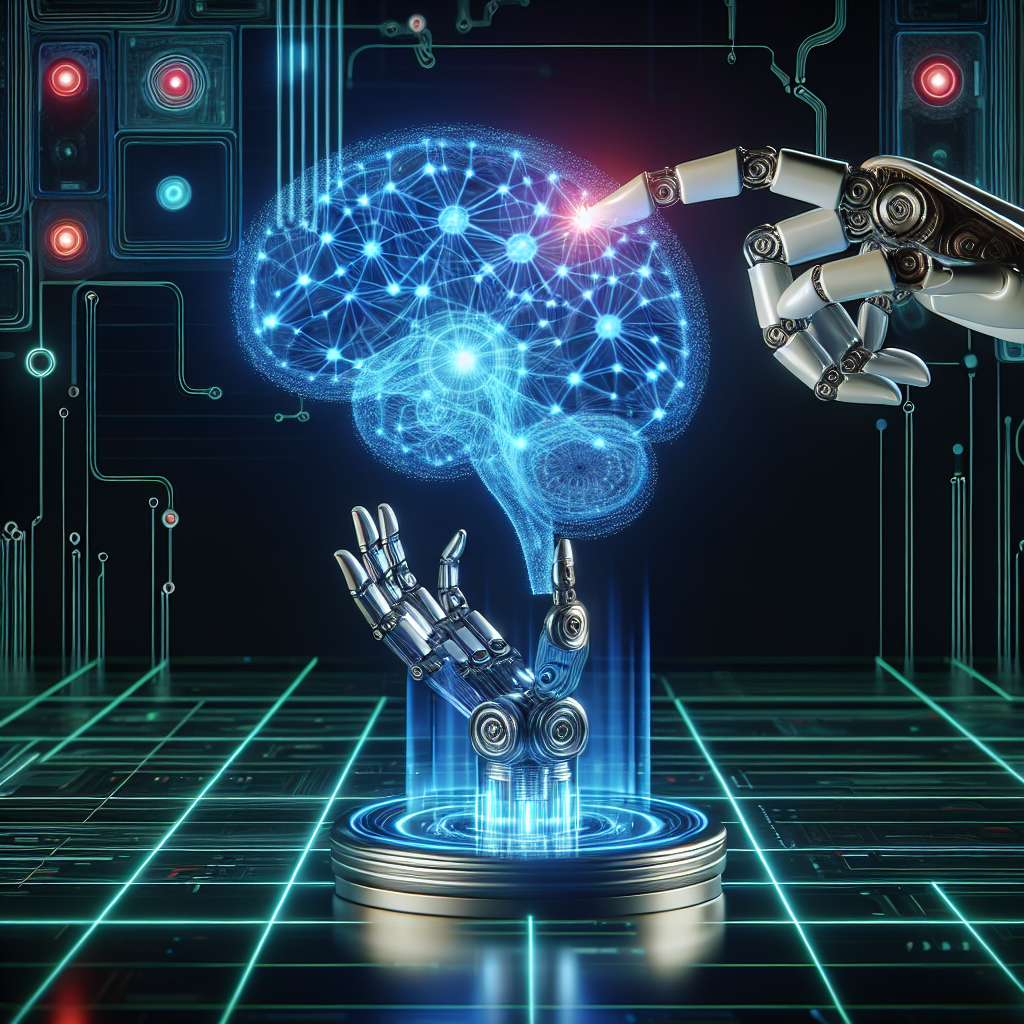The Future of AI in Robotics
Artificial Intelligence (AI) has been making significant strides in recent years, particularly in the field of robotics. The integration of AI technology into robotics has the potential to revolutionize various industries and improve efficiency, productivity, and safety. As AI continues to evolve and advance, the future of AI in robotics looks promising and full of possibilities.
One of the key aspects of AI in robotics is machine learning, which allows robots to learn from experience and improve their performance over time. This capability enables robots to adapt to different tasks and environments, making them more versatile and efficient. Machine learning algorithms can help robots recognize patterns, make decisions, and even interact with humans in a more natural way.
Another important aspect of AI in robotics is computer vision, which allows robots to perceive and understand their surroundings. By using cameras and sensors, robots can identify objects, navigate through complex environments, and even recognize human gestures and emotions. Computer vision technology is essential for enabling robots to interact with the physical world and perform tasks autonomously.
In addition to machine learning and computer vision, AI in robotics also involves natural language processing, which enables robots to understand and respond to human commands and instructions. By incorporating speech recognition and language understanding capabilities, robots can communicate with humans more effectively and carry out complex tasks with minimal human intervention.
The future of AI in robotics holds great potential for various industries, including manufacturing, healthcare, agriculture, transportation, and many others. In the manufacturing sector, AI-powered robots can automate repetitive tasks, improve quality control, and increase production efficiency. In healthcare, robots equipped with AI technology can assist with surgeries, patient care, and drug delivery, reducing the workload on healthcare professionals and improving patient outcomes.
In agriculture, AI-powered robots can help farmers monitor crops, manage resources, and optimize farming practices, leading to increased yields and reduced environmental impact. In transportation, autonomous vehicles powered by AI technology can enhance safety, reduce traffic congestion, and improve the overall efficiency of transportation systems.
As AI continues to advance, the capabilities of robots will also expand, enabling them to perform more complex tasks and interact with humans in more sophisticated ways. For example, future robots may be able to learn new skills on their own, collaborate with other robots and humans, and even exhibit emotions and empathy. These advancements will not only improve the efficiency and productivity of robots but also enhance their ability to work alongside humans in a wide range of settings.
Despite the numerous benefits of AI in robotics, there are also challenges and concerns that need to be addressed. One of the main concerns is the potential impact of AI on jobs, as automation and robotics may lead to the displacement of human workers in certain industries. However, experts believe that AI will create new job opportunities and enable humans to focus on more creative and strategic tasks, while robots handle the routine and repetitive work.
Another concern is the ethical implications of AI in robotics, particularly in terms of privacy, security, and bias. As robots become more intelligent and autonomous, there is a need to ensure that they are designed and programmed ethically, with safeguards in place to protect personal data and prevent discrimination. Additionally, there is a need for regulations and guidelines to govern the use of AI in robotics and ensure that it is used responsibly and ethically.
In conclusion, the future of AI in robotics is bright and full of possibilities. As AI technology continues to advance, robots will become more intelligent, versatile, and capable of performing a wide range of tasks in various industries. By harnessing the power of AI, robots have the potential to revolutionize the way we work, live, and interact with the world around us. As we move forward into this exciting future, it is important to address the challenges and concerns associated with AI in robotics, and work towards creating a future where humans and robots can coexist and collaborate harmoniously.
FAQs:
Q: What are some examples of AI-powered robots in use today?
A: Some examples of AI-powered robots in use today include autonomous vacuum cleaners like Roomba, surgical robots like Da Vinci, warehouse robots like Kiva, and social robots like Pepper.
Q: How is AI technology being integrated into robots?
A: AI technology is being integrated into robots through machine learning algorithms, computer vision systems, natural language processing capabilities, and other AI techniques that enable robots to learn, perceive, and interact with humans.
Q: What are the benefits of AI in robotics?
A: The benefits of AI in robotics include improved efficiency, productivity, and safety in various industries, as well as the ability for robots to perform complex tasks, adapt to different environments, and interact with humans more effectively.
Q: What are some of the challenges of AI in robotics?
A: Some of the challenges of AI in robotics include the potential impact on jobs, ethical concerns related to privacy and bias, and the need for regulations and guidelines to govern the use of AI in robotics responsibly.
Q: What does the future hold for AI in robotics?
A: The future of AI in robotics looks promising, with robots becoming more intelligent, versatile, and capable of performing a wide range of tasks in various industries. As AI technology continues to advance, robots will play an increasingly important role in our daily lives.

